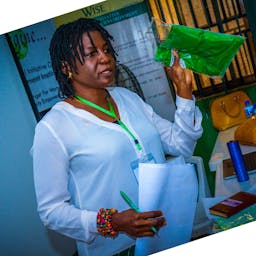HOW SAFE ARE INSECTICIDE TREATED BEDNETS?
Jan 21, 2015
Story
Insecticide Treated Bed Nets (ITBN) are nets that have been treated with an insecticide called “Pyrethrins”. Pyrethrins have to a very large extent replaced DDT which was widely used in the past. As confirmed, DDT is very poisonous and does great harm to people and animals, causing cancer and birth defects. DDT can travel great distances in the air and water, and stays in the environment for many years, becoming more dangerous over time. It is for these very reasons that less toxic insecticides such as pyrethrins are now recommended in most countries.
Though relatively safe, Pyrethrins pose some form of dangers if not safely handled. The greatest dangers from ITBN are when they are dipped in the insecticide which leads to exposure through the skin. Dangers also result from children sucking or chewing on treated nets, which of course lead to exposure through swallowing. When these nets are washed and the waste water is not properly disposed, the insecticide can poison water sources and harm aquatic life as well as other animals, insects and people who rely on such polluted water sources for their basic water needs.
In recent times in Nigeria, there has been so much hype about ITBN, as tens of millions of the treated nets have been distributed under the highly celebrated roll-back-malaria program of the Federal Ministry of Health in partnership with local and international aids and donor agencies, political groups, NGOs, CBOs, FBOs and other civil society organizations.
While these efforts are laudable, the issue of community education on the safe handling of these nets remains unattended to. People are ignorant of how to make efficient and effective use of the ITBN. They remain ill informed that Pyrethrins are very toxic and could be dangerous in cases of uncontrolled exposure, inhaling, swallowing and if it gets into water sources. It is quite amusing that some of these nets remain in use even when they have holes or tears, due to lack of awareness. It is also of interest that people are oblivious of how long the insecticide treatment on the net lasts. It is very needful that people should be given proper orientation as regards how to keep the bed nets in good condition, when and how to reapply pesticide and directions of use. For the ITBN distribution program to be successful, as a means of controlling the malaria scourge, community education on safe handling of the nets must be taken seriously. Other preventive measures should also be explored and emphasized, as till date, malaria still remains a killer infection, ravaging especially pregnant women and children in most under-developed and developing parts of the world. The social and economic costs of malaria are quite enormous and worrisome especially in terms of man hours lost, when people are infected.
Being an environmental health issue, it could also be tackled through enlightenment campaigns that projects and encourage people to get rid of possible mosquito breeding grounds/places/points. The use of screens on windows and doors, properly maintained drainage around homes, biological control such as the use of bacteria called BTi, breeding of mosquito eating fish, planting of mosquito resistant trees such as Neem should be included in Malaria Control programs. The programs adopted must be a safe and all inclusive community wide control of breeding, as well as treatment for everyone.




